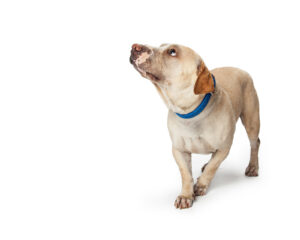Barks Blog
The Problem with Punishment

Fortunately today, thanks to force free advocating organizations like Pet Professional Guild, there is much more awareness of the detrimental effects of punishment. Sadly though, in some quarters it still prevails and is even advocated by some and perpetuated by the media. So what actually is the definition of ‘punishment’?, what constitutes it? What are the alternatives? Let’s take a look.
What Is Punishment?
Speaking scientifically, there are two forms of punishment – positive and negative. Let’s deal with positive punishment first. Positive punishment refers to when something is added into your pet’s world that he/she deems unpleasant. This ‘something’ will suppress your pet’s behaviour and your pet will work to avoid it.
What Constitutes Positive Punishment?
Obvious examples are electric shock devices, physical corrections such as smacking or hitting the dog and so called ‘alpha dog’ techniques such as ear pinching, nose blowing and rolling etc. To be effective, if we can call it that, punishment must be gradually increased over time since an animal will gradually habituate to its effects.
Punishment is not always obvious
This is a problem I often encounter. Owners I work with are sometimes horrified when it is gently pointed out that what they are actually doing is construed by the dog as positive punishment. Nose taps delivered to a mouthing puppy are perhaps a less subtle example, but leash jerking a pulling dog, shouting at a dog for something the owner deems inappropriate, body shaping a dog into position whilst training, yanking a dog whilst pulling towards another dog or whilst jumping etc.
What’s The Problem Here? – Emotional and Physical Levels
The problem we have with punishment is multidimensional. We have the physical aspect of jerking, yanking, shocking, pulling etc. which of courses causes pain in various aspects of the dog’s body. This may be exacerbated if the dog already has complications such as musculoskeletal disorders or skin complaints for example or is an older individual or growing puppy. But we must also consider positive punishment at an emotional level. Consider anthropomorphically, what would your reaction be should you be electrically shocked, hit, yanked, pushed to the floor, jerked away from something you really wanted to look at? My guess is a mixture of emotions and feelings including anger, frustration, anxiety, fear, a good risk of aggression resulting from these last two emotions and pain. These are not positive feelings! This is the crux of the problem with punishment, the animal is left feeling bad to put it very simplistically. What is very sad is that in many cases, emotional shutdown results – we call this learned helplessness. The animal simply completely mentally and emotionally shuts down and appears to comply with the human. Most times passive posturing will be observed. Of course, the animal is not at all complying but has just lost all emotional resilience to respond in any other way – the human usually responds with glee that their techniques are working…very sad. I recall one dog I worked with whose behaviour had progressed so far due to a near lifetime of positive punishment, it was symptomatic of post traumatic stress disorder.
Consider the Individual
Like us, dogs are not all the same. We must be aware of the fact that each animal has a different tolerance and threshold for the way we handle and interact with them and the situations in which we place them. Some dogs due to their individual and innate sensitivities or possibly due to aversive past experiences will be less able to tolerate loud noises in households or maybe a busy puppy training school – this for them may be construed as a negative experience, whereas other more outgoing individuals may be completely unphased.
Is Punishment Always Bad?
I mentioned earlier that there are two forms of punishment. Negative punishment is the second type. Negative punishment refers to taking away something in your dog’s environment that he or she finds desirable. So by example, you may turn your back on your dog if he jumps up or take away her toys if she continues to pester for your attention. While you are not adding in anything aversive here, the emotional consequence is still frustration. Consider how you would feel – you try to get someone’s attention and they ignore you. What is your response? Try harder? Give up? Again it all depends on the individual.
What Else Can We Do?
By far a better approach is to work with your dog not against. Punishment as we have seen, generates emotions of frustration, anger, anxiety, fear and causes pain. What I always talk about with my clients is to turn negatives into positives and to look for those positives even when they don’t look obvious – I guarantee they will be there somewhere! So, positive reinforcement is the only way to go. Turn things around, think differently. Your dog is behaving inappropriately for you, so teach time a new behaviour and reinforce this positively each time you encounter that stimulus. Ignore behaviour you don’t want but immediately your dog does something you do want, reward that instead – he will repeat behaviours that have good consequences for him over and over, not behaviours that have poor outcomes. Create pauses in inappropriate behaviour so that you can quickly insert a newly taught behaviour and reinforce that. You have to be inventive and persistent and patient. Punishing will not achieve anything except a dog who is afraid of you. There is nothing more rewarding than a dog who is happy and willing to learn because he knows it’s is fun to do so and that is only achieved by positive reinforcement.
